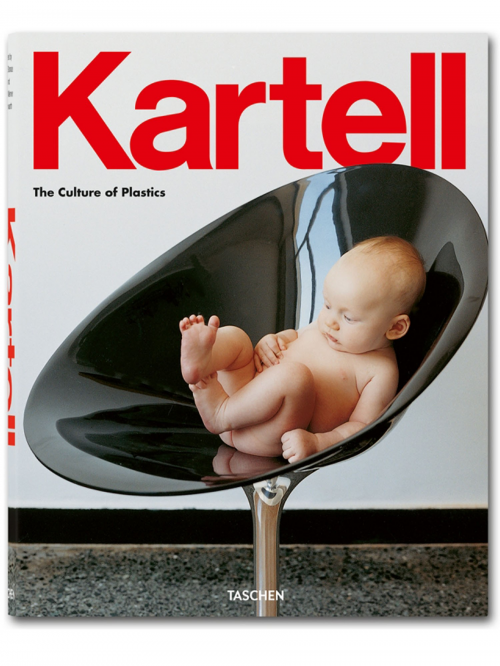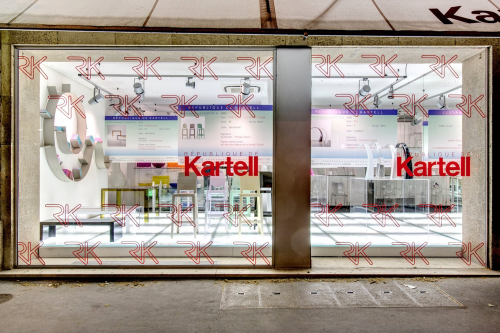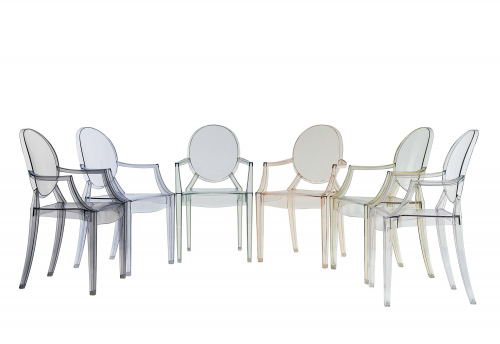 click > enlarge
click > enlarge
Kartell made plastic cool. Established in 1949 by chemical engineer Giulio Castelli, the company distinguished itself with such designers as Gino Colombini and Anna Castelli Ferrieri. It teamed up with many of the name designers from the golden age of Italinan design in the 1950s and 1960s. It became known in the US, particularly for work by Joe Colombo at the landmark exhibition at the Museum of Modern Art in New York, Italy: the New Domestic Landscape in 1969.
The Kartell items included in The New Domestic Landscape were among the most practical and accessible in a show that sometimes verged into counterculture utopianism. The company was purchased by fashion industry veteran Claudio Luti and given renewed life. In the last few years, Kartell established polycarbonate as a key material and explored its possibilities of color and transparency. The most recent stellar examples of Kartell products include Ron Arad’s Bookworm bookshelf and Philippe Starck’s Ghost chair.
Now Taschen has done a book on the firm, PLASTIC CULTURE with text by Elisa Storace, curator of the Kartell museum just outside of Milan—who knew? [ kartell ] [ taschen ]

| ron arad’s bookworm shelf on wall | kartell’s paris showroom

phillipe starck | ghost chair
<a href=" about phil patton
about phil patton

Maison & Objet just presented their 2012 Now! Design à Vivre award to Japanese designer Tokujin Yoshioka. A favorite of the luxury world, Yoshioka has worked with Hermès, BW, Cartier and Issey Miyake as well as museums like the Musee d’Orsay and the Tokyo Metropolitan Art Museum. But aside from delivery luxe goods, Yoshioka is known as a “designer of the senses” and for exploring new “technopoetic ground.”
Just what makes something technopoetic? Yoshioka’s 2007 Pane Chair is a good example. Made from small, lightweight fibers baked in a kiln, it’s an excellent model of how rethinking materials can yield both innovative solutions and exciting new forms. I mean, when was the last time you looked at a bunch of fiber shavings and thought, hey that might make a good chair?
Earlier this year Yoshioka unveiled a new furniture collection for Kartell so minimalist the pieces are almost completely invisible. In fact, that’s what Yoshioka named the collection. “Invisibles” plays with our idea of physical space with benches and chairs that make it appear as if the user is seated in mid air. “In the last few years,” Yoshioka said, “I have been thinking about a design that would include natural phenomena and invisible elements such as sense, wind and light. The presence of the object is eradicated and it will create a scenery of a sitter floating in the air.”
Scenery is the key word there; I imagine a room full of “Invisibles” would be much more effective than just one in a cluster of so-called regular chairs. But aside from the coolness and conceptual factor, just how comfortable would these things be? At least Philippe Starck’s Ghost Chair has a smooth, rounded back and a shaped seat. As I’m not in the market for luxe goods I doubt I’ll be test driving one any time soon, but a word to those on the hunt for injection-molded polycarbonate: bring a cushion.



about perrin drumm
 click > enlarge
click > enlarge
 about phil patton
about phil patton






